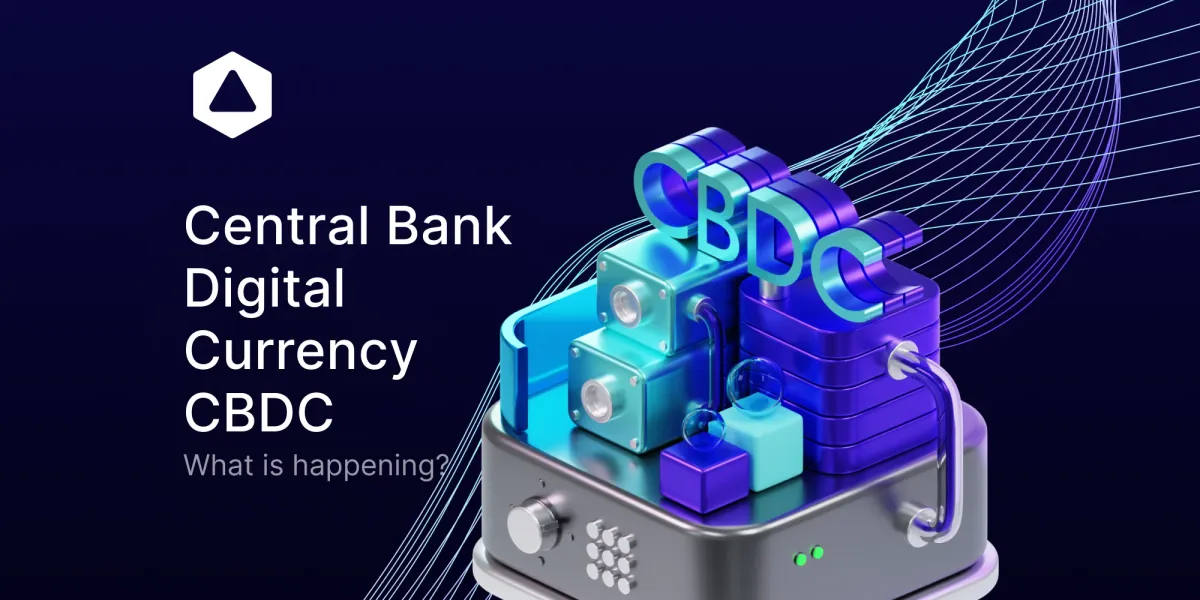Central Bank Digital Currency - CBDC: What You Need to Know
Central bank digital currencies (CBDCs) aim to modernize money by providing digital versions of official currencies. While CBDCs offer potential benefits like faster payments and financial inclusion, they also pose risks and challenges...

As the world becomes increasingly digital, many central banks are considering launching their own digital currencies. Known as Central Bank Digital Currencies (CBDCs), these new forms of currency offer a range of benefits and raise a host of questions about the future of money. In this article, we'll explore the world of CBDCs and what they could mean for the future of finance.
What is a CBDC?
Central Bank Digital Currencies (CBDCs) are digital versions of a country's official currency, issued and backed by the central bank.
To be considered a currency, a means of payment must be denominated in a country's official monetary unit and recognized as such under the country's laws. It must also be issued by the central bank, have a fixed value, have certain privileges under private law, have criminal law protections against damage or counterfeiting, and have legal tender status.
While they share some similarities with traditional cryptocurrencies, CBDCs are distinct in that they are backed by a government and have legal tender status. The International Monetary Fund (IMF) has proposed a global CBDC platform, as it considers domestic CBDC projects insufficient to compete with cryptocurrencies.
Potential Benefits
CBDCs offer potential benefits such as faster and cheaper transactions, as banks would have to compete with the central bank, leading to greater efficiency and reduced costs. The use of CBDCs could improve tax revenues by simplifying the tax collection process, eliminating the need for individuals to file their taxes, and ensuring more accurate and efficient tax collection. This could be a dream come true for tax collectors. CBDCs could also make payments easier both within countries and across borders, eliminating the need for currency exchanges.
Potential Risks and Downsides
CBDCs pose risks such as increased government surveillance and control, as they are tied to an individual's unique digital ID which could be used in dystopian terms to monitor behavior. Possibility of abuse of power, as seen in historical examples such as the confiscation of gold by the US government in 1933.
To mitigate these risks, certain design choices could be implemented, such as placing limits on non-resident holdings and having commercial banks manage CBDC accounts with restrictions on balances.
More challenges still need to be addressed, including preventing cyberattacks, ensuring interoperability with other countries' CBDCs, and facilitating the coexistence of CBDCs with traditional finance. How the transition to CBDCs will occur remains uncertain and subject to much speculation.
Are CBDC's Inevitable?
Despite the potential risks associated with CBDCs, many experts believe that their widespread adoption is inevitable, as more countries launch their own digital currencies. Many will feel pressure to keep up with other nations on the global stage.
In a recent panel discussion (video above), experts debated whether Central Bank Digital Currencies (CBDCs) will become widely used in the next 5 years.
The State of Central Bank Digital Currencies Worldwide
Several countries have shown interest in central bank digital currencies, the global CBDC landscape remains uneven. A small number of countries have launched or plan to launch CBDCs in the near future, while over 100 others are at various stages of research and development.
Countries pursuing CBDCs see potential benefits like faster payments, increased inclusion and efficiency gains. Jamaica, Nigeria and The Bahamas have already launched CBDCs, while Canada, UAE, Saudi Arabia, Uruguay, India, Ghana, China, France, and Singapore plan upcoming launches.
However, other countries like Denmark, Singapore, the Philippines, Haiti, Ecuador, and Finland have canceled CBDC plans. This indicates that CBDC adoption is not a simple walk through the park and will likely require more time before a global digital currency can be widely used.
Conclusion
As we’ve seen through the article, CBDCs could have the potential to change the global financial system forever. However, progress is likely to be gradual, and some kind of major catalyst event will likely need to occur first. What exactly this event will be is uncertain. We see that current trends indicate that technological advances, governance frameworks and collaboration are still needed and point to eventual CBDC adoption. It remains to be seen how central banks will actually implement these conditions for their citizens around the world while also effectively managing potential risks and trade-offs in a stable manner.

Connect with Bitfinity Network
Bitfinity Wallet | Bitfinity Network | Twitter | Telegram | Discord | Github

*Disclaimer: While every effort is made on this website to provide accurate information, any opinions expressed or information disseminated do not necessarily reflect the views of Bitfinity itself.


Comments ()